On 6 February, in the time span of just a few hours, an interesting pair of eruptive events occurred on the Sun of which it was difficult to say if they were related or not. Surely, there were two flares and two coronal mass ejections (CMEs), but their timings and outlook hinted to some magnetic commonality.
The protagonists were NOAA 1667, a simple and relatively small sunspot group in the northern hemisphere, and a 200.000 km long but not very impressive filament about 10°-15° degrees to the east ("left") of this sunspot group.
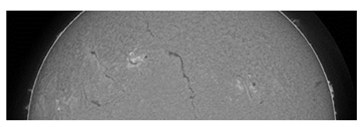
At midnight, an eruptive event occurred in NOAA 1667. A C-class flare (C8.7 peaking at 00:21UT) was accompanied by the eruption of the group's filament, and by a CME. The filament eruption was quite impressive, and showed a fair amount of helical movement. The earth-directed CME was already visible in coronagraphs around 00:30UT, and was -in view of the dense filament eruption- rather faint.
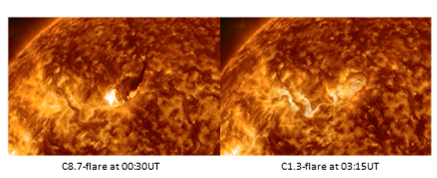
At 03:16UT, the Sun produced another C-class flare (see image above). This C1.3 double ribbon flare was a long duration event (LDE), starting already at 02:22UT and ending only at 04:25UT. The bright ribbons are on each side of the filament, but nothing of the filament itself seems to have been ejected. Yet, interestingly enough, the ejected plasma cloud was quite dense for such a small flare. See image below for a view of the two CMEs by SOHO en STEREO-B.
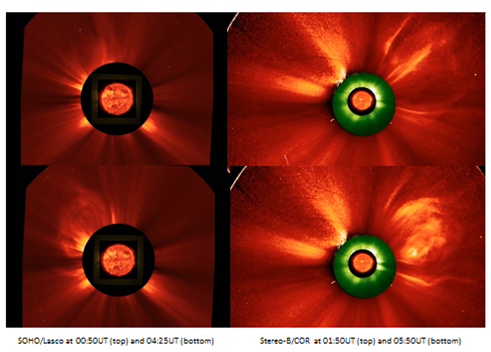
Because of the complexity of the events, 3 movies were created.
Movie 1 starts with a clip of the whole Sun showing the flares in the chromosphere (H-alpha, from the GONG H-alpha Network). Then follow combined SDO-images giving a zoomed-in view of the flares in the transition region and the corona (resp. AIA304 and AIA171). The movement of the ejected filament material seems to indicate that most fell back to the Sun, and was not ejected.
The last clip provides a running difference movie of the same area in the hot corona (AIA193). A running difference movie depicts only the difference with the previous image, and thus allows for a more detailed view. Notice that important coronal movement and magnetic reconnection are taking place between 02:00 and 03:00UT, so even before the start of the second C-class solar flare. The movie-still underneath (around 02:30UT) shows one of the loops expanding over the eastern filament. This indicates that the C8 and C1 flares really occurred in different areas, and so that at the very most the second event happened due to magnetic instabilities caused by the first event.
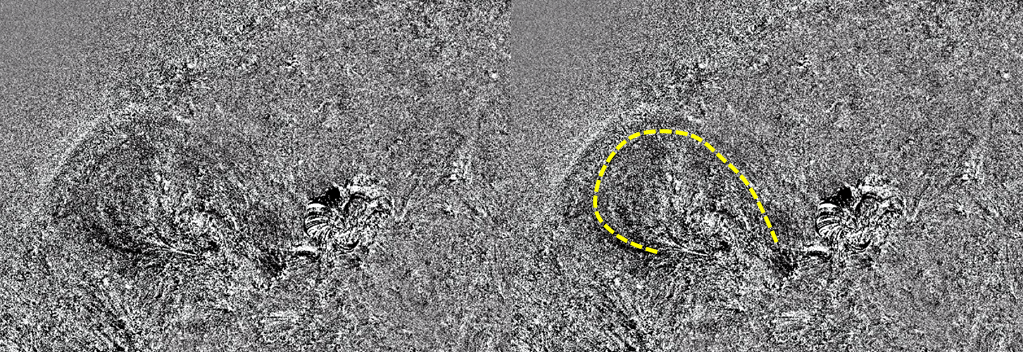
Movie 2 shows the associated CMEs. The first clip is a combo of SDO/AIA304, PROBA2/SWAP and SOHO/Lasco C2 imagery. Then follows a difference movie of the Lasco C2 images (from Cactus), and the view by STEREO-Behind (the Earth is to the right). Two separate CMEs can clearly be distinguished. The second CME might be brighter simply because there was more material in the corona above the blast area (not necessarily the remaining material from the previous filament eruption). Also, the direction of propagation of this CME is different from the first one, i.e. more like in the plane of the sky. This may also explain why the typical structure of a CME (bright leading edge, dark cavity and bright core) is better seen in the second CME, but is a lot less obvious in the first one.
Movie 3 shows a combo view of the flares using SDO-imagery in 3 wavelengths (AIA171, AIA193 and AIA304). Notice the density and twisting of the erupting filament. The still underneath shows the post-flare coronal loops from the C8.7 flare while the C1.3 flare is still in progress.
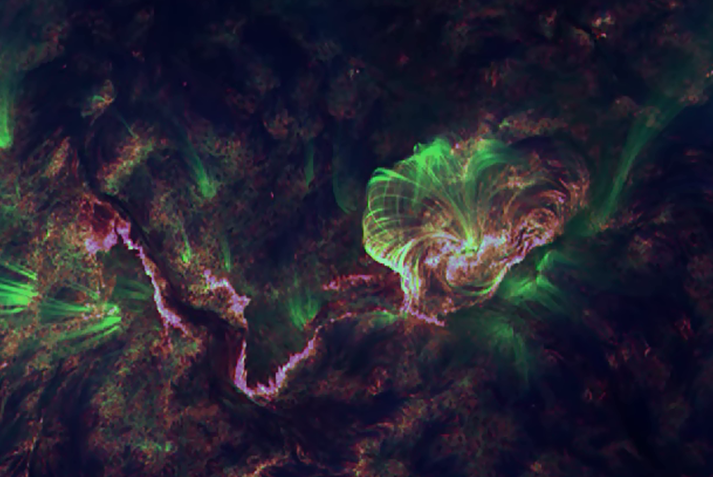
Credits - Images and movies for this topic were taken from the GONG H-alpha Network, SDO, LMSAL/Solarsoft, PROBA2/SWAP, SOHO/Lasco C2, Cactus, and STEREO-Behind.
 |
 |





